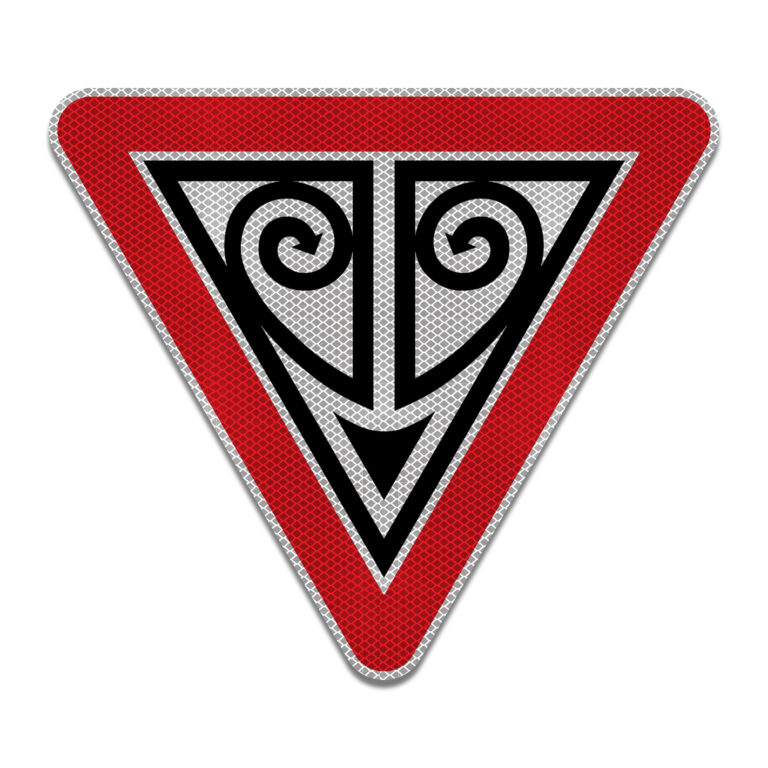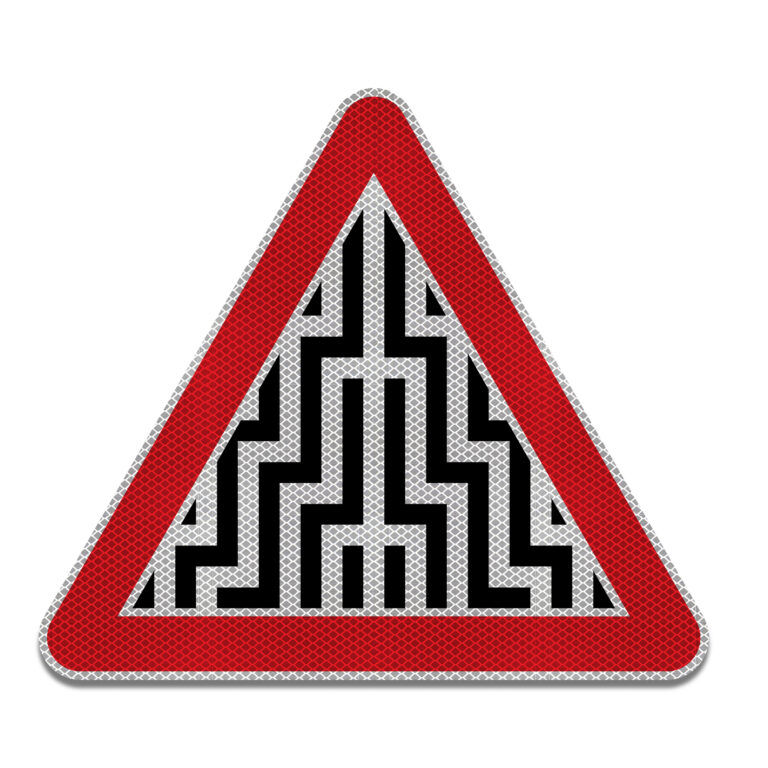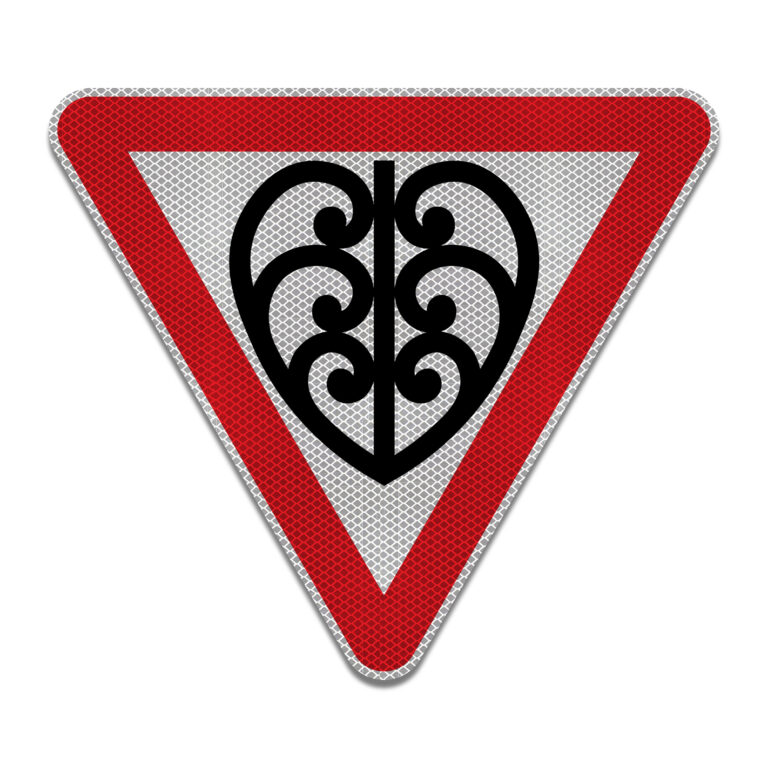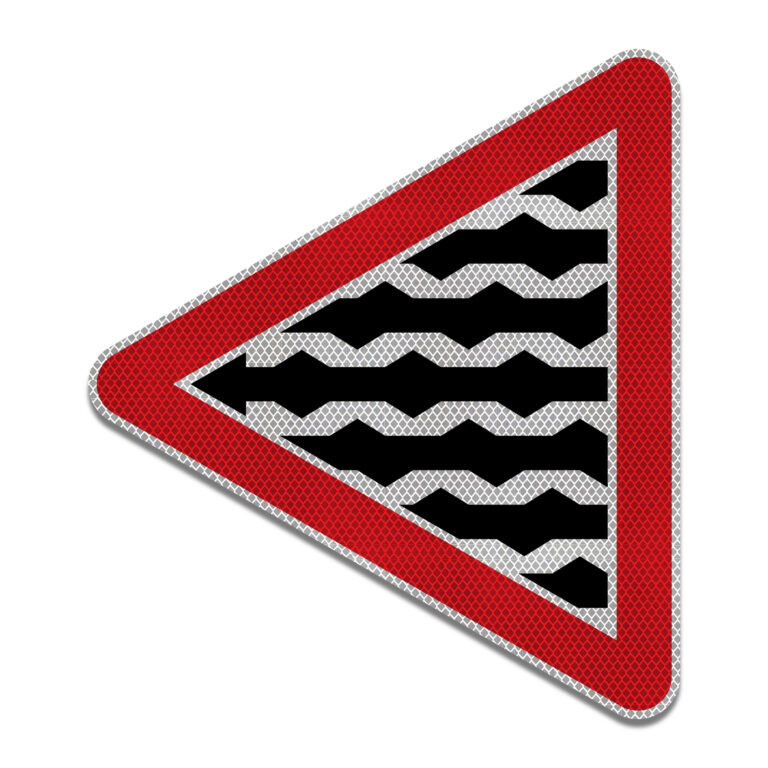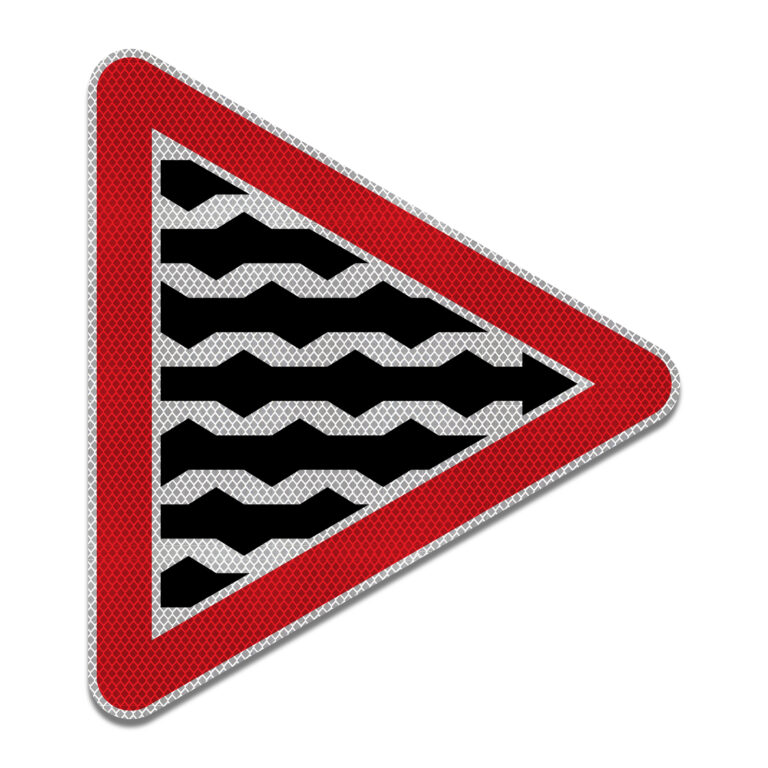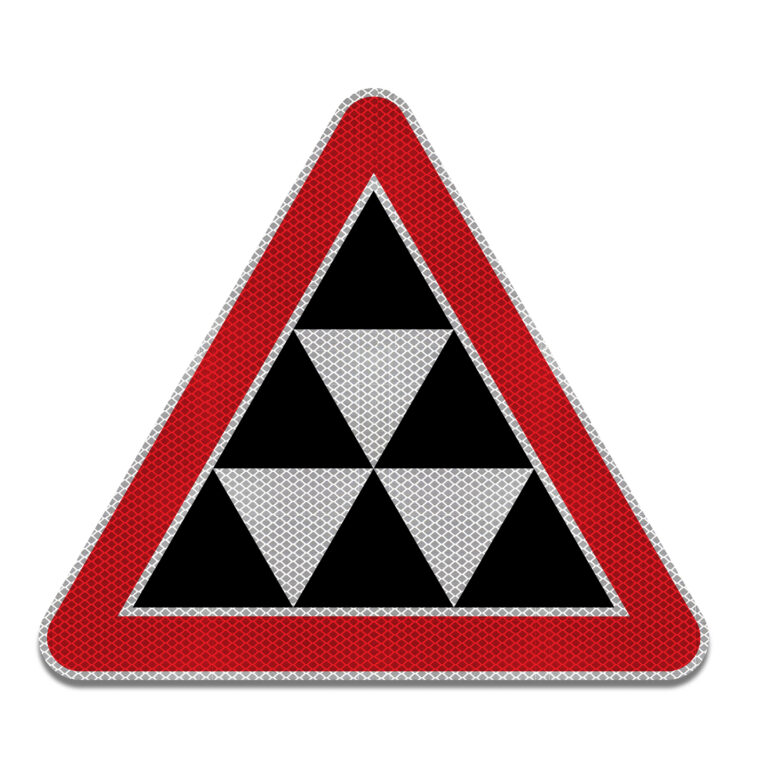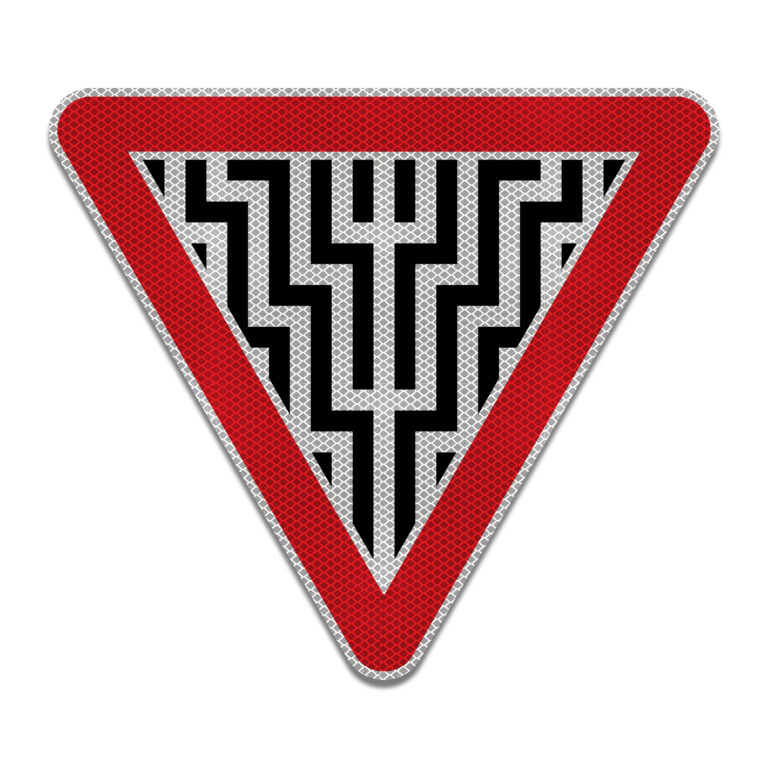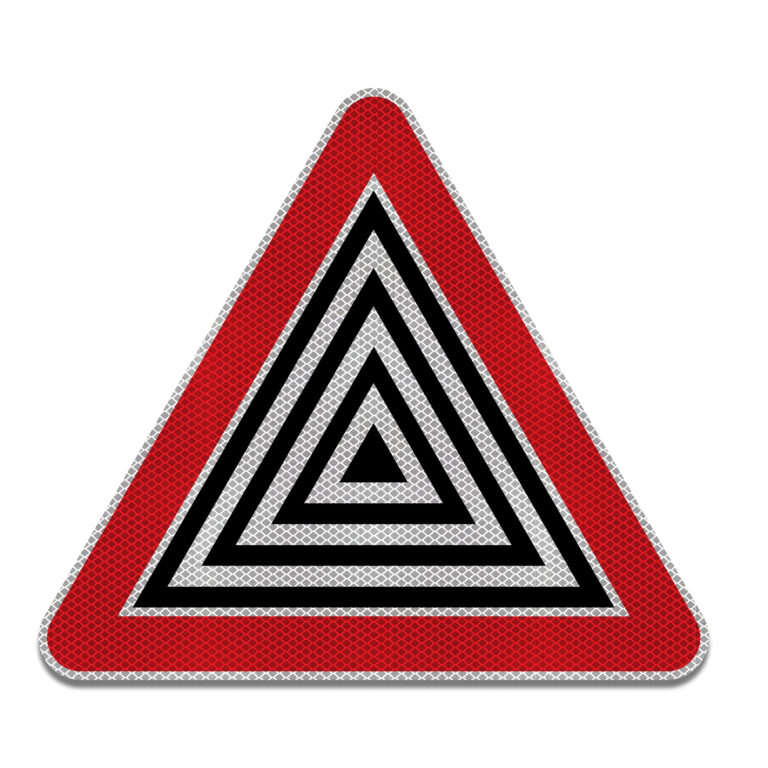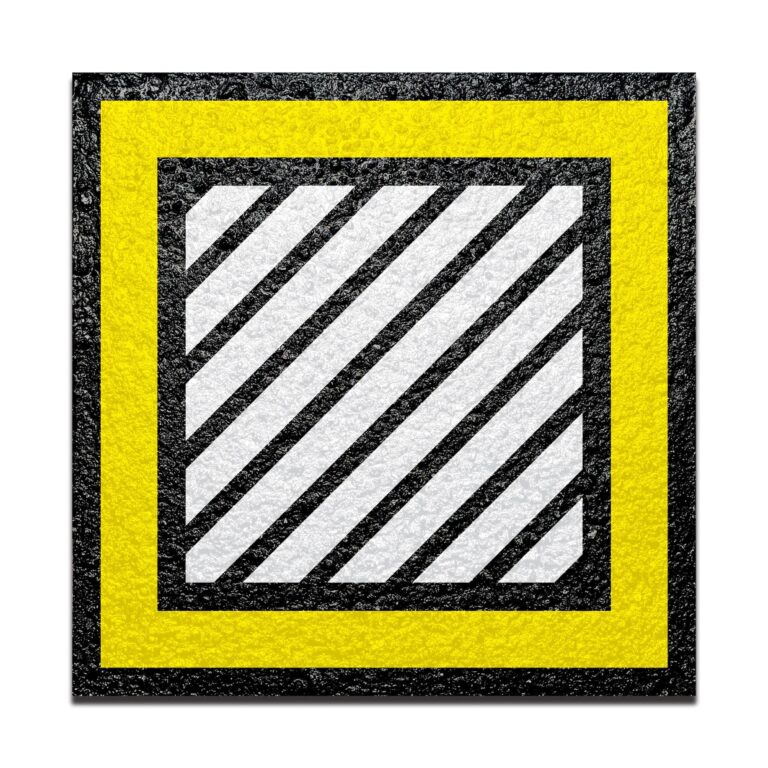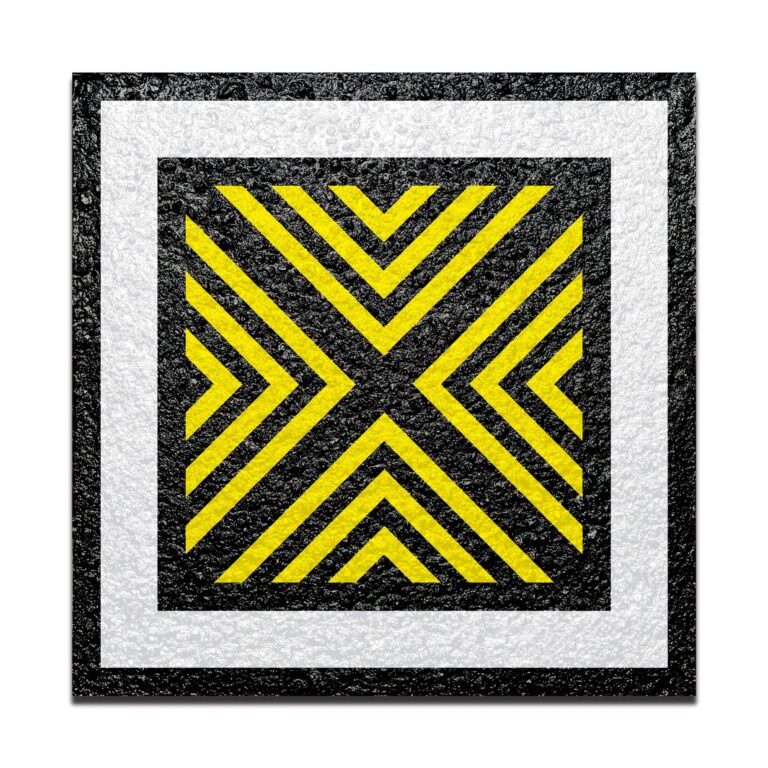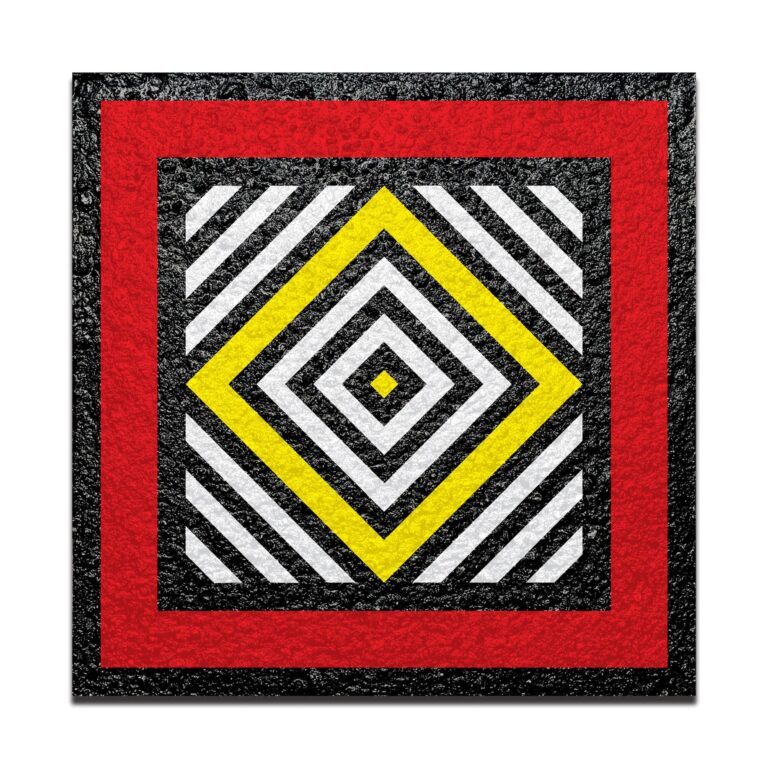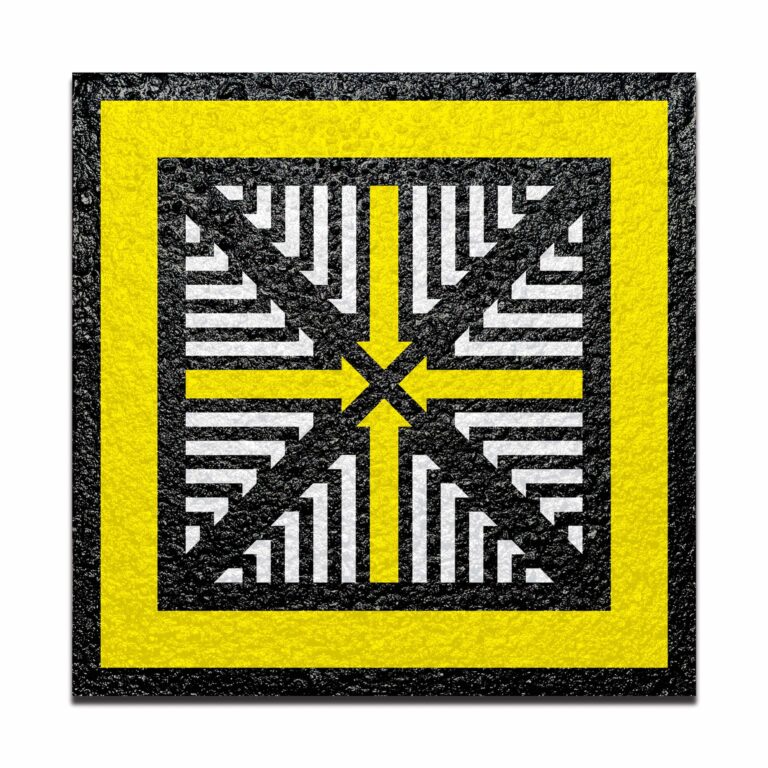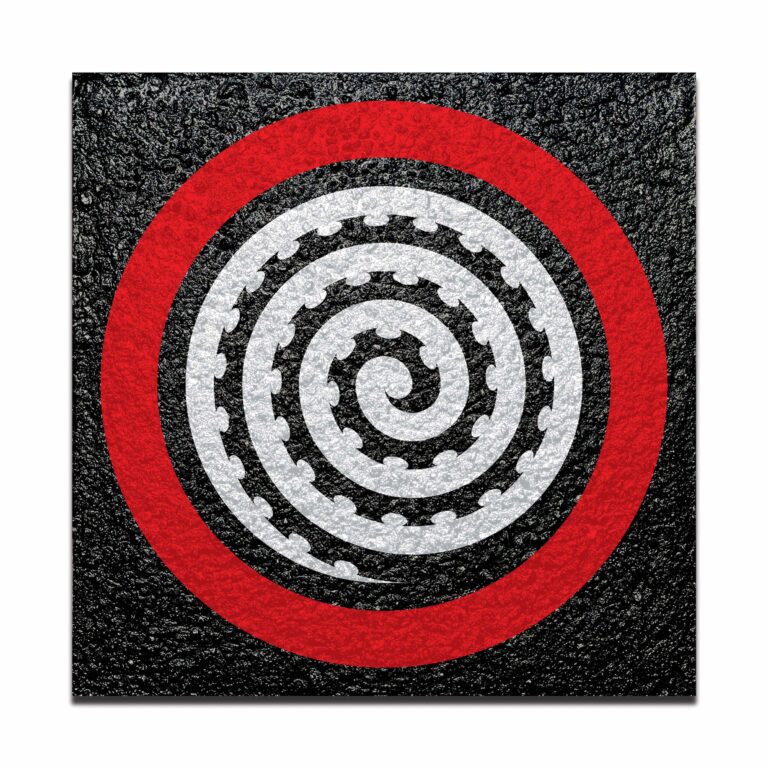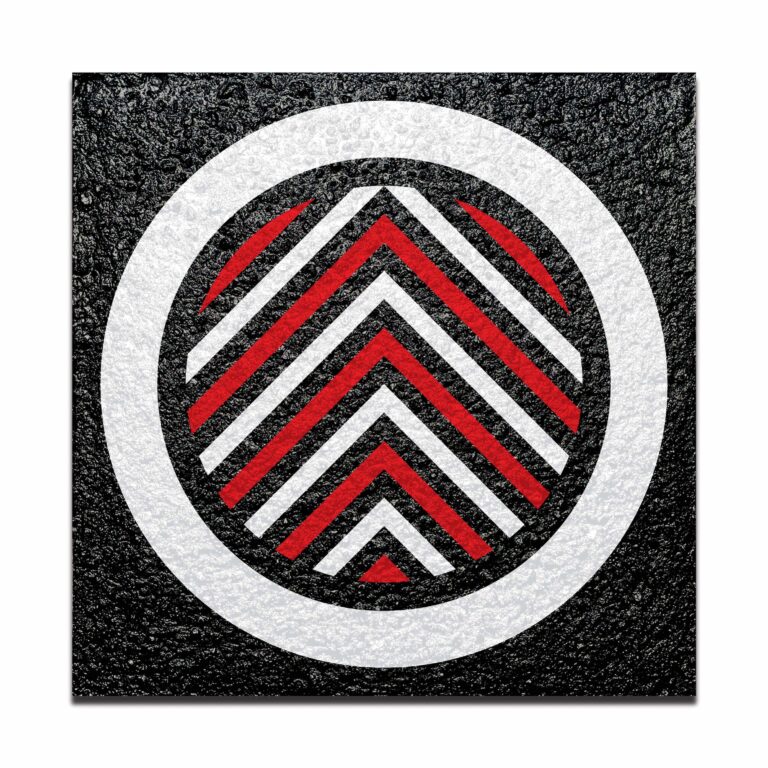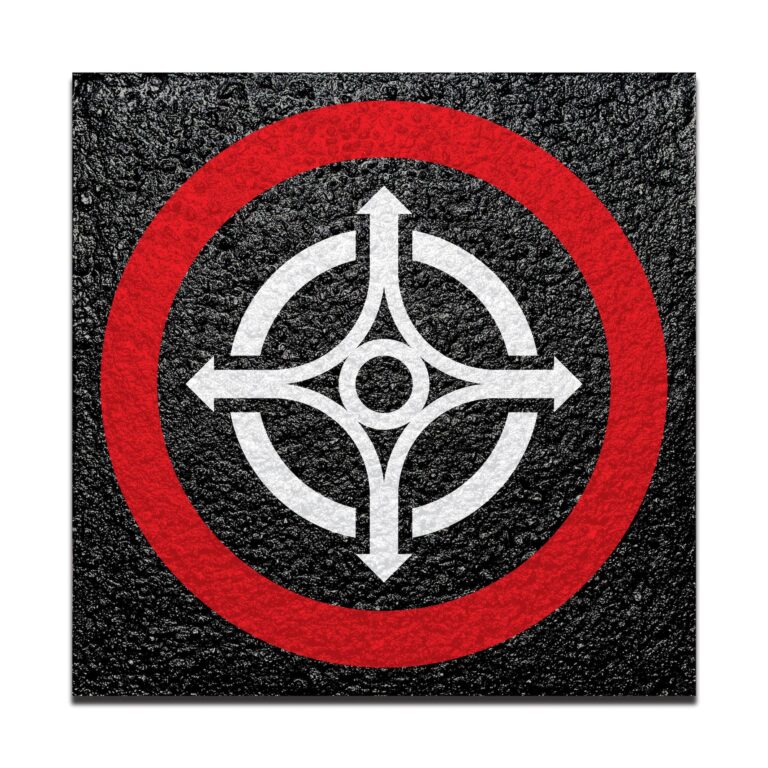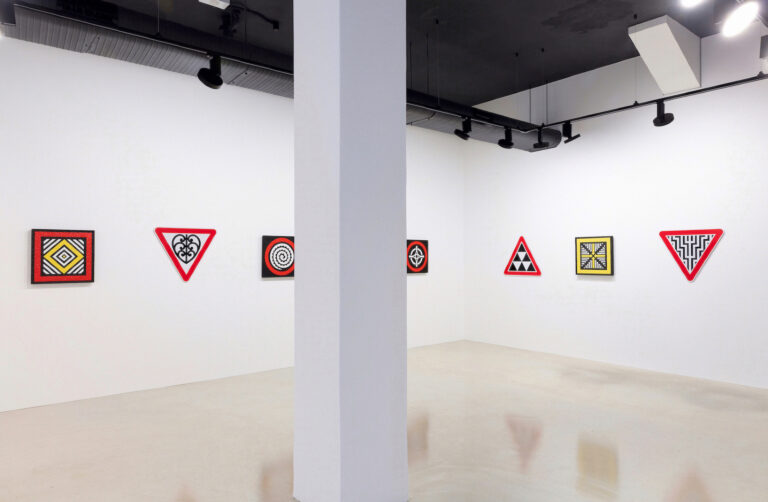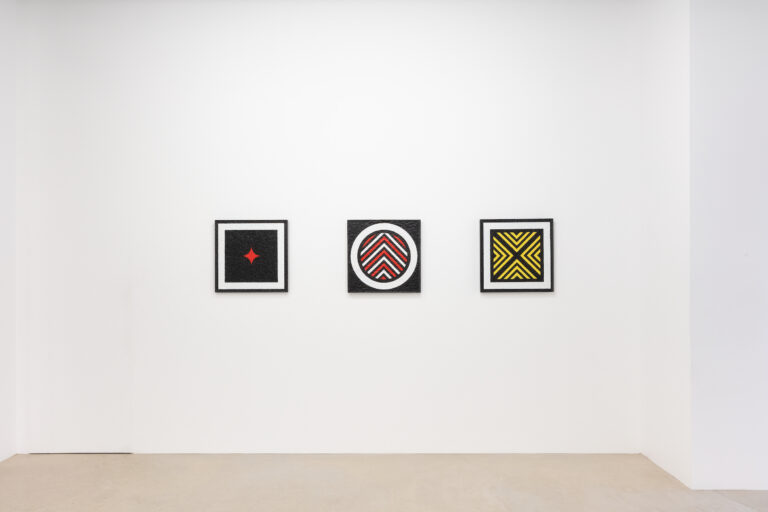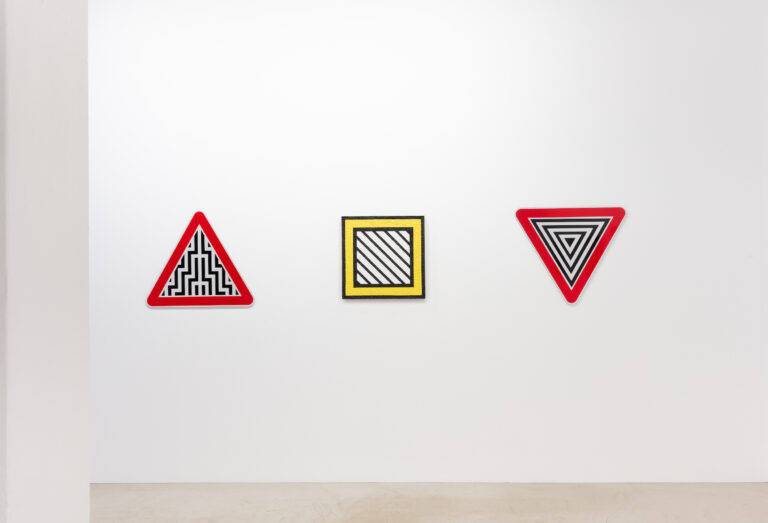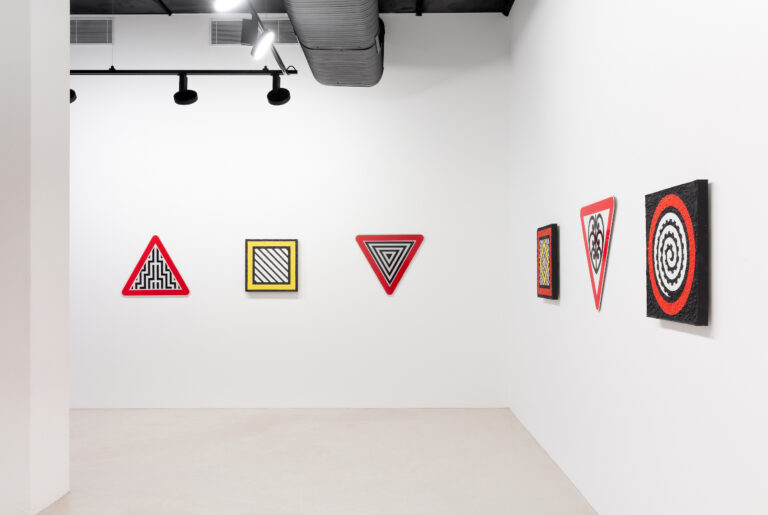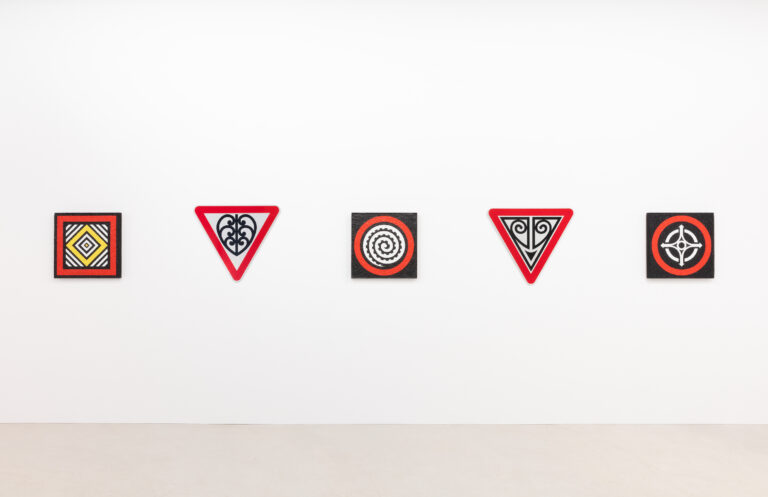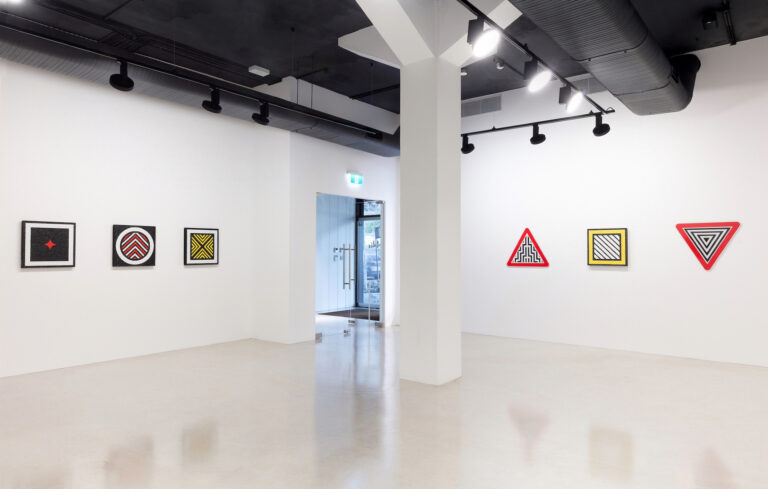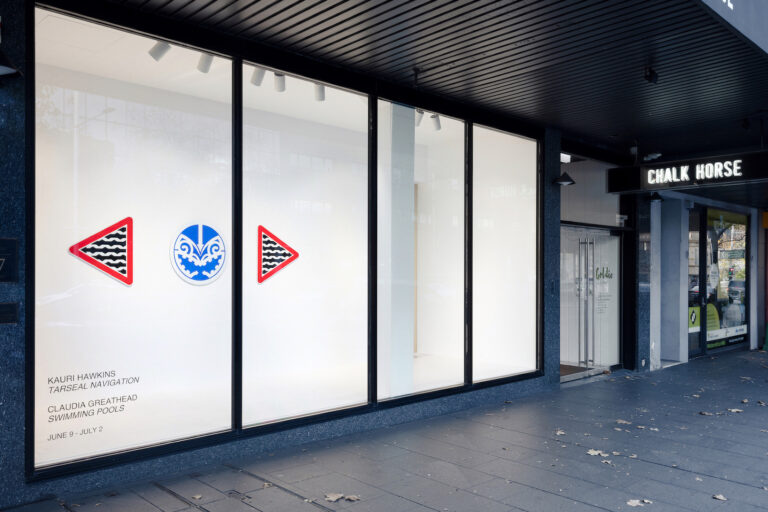
Artworks
Installations
This gallery sits on a significant road that pierces the suburbs of Darlinghurst and Woolloomooloo. A main road that leads to the civic heart of this city. A road, like so many in this metropolis, undoubtedly built on walking tracks that pre-dated colonisation. A road that sits now glimmering in the morning light, made of tar and concrete with castles built of glass and steel. This is a road we walk and drive unaware of the history and meaning that sits just below its surface.
Aotearoa based artist Kauri Hawkins presents an exhibition of paintings that look at roads and signposts whilst simultaneously honouring the past and embracing the future. His paintings onto concrete slabs peppered with gravel used in road construction are collectively grouped under the title Tarseal Navigation for this exhibition. The works have meaning in material and metaphor. Their materiality mimics the process of sealing roads in tar, with thick paint standing in, and the utilitarian nature of road signs. They also speak to a more personal and familial history that looks at Māori labour. It was Māori that laid roads in Aotearoa/New Zealand. Creating lines and patterns that traversed the islands. Hawkins considers the notion of Whenua, the land beneath us but also the source of life hidden bellow tar roads and concrete. For Hawkins, art and life meld in practice. His own journey to exhibit in this continent reflects the Māori who have travelled to this land in search of opportunity through labour.
Hawkins was born in Palmerston North in 1995 and raised in Turanganui-a-Kiwa Gisborne in the far east of the North Island. His heritage Māori, Pākehā and Rarotongan. Although defined by his ancestry in life and art he is keenly aware that culture is in a constant state of evolving as is cultural wisdom and understanding. He looks to celebrate and make visible this cultural legacy. To make culture highly visible. To unite people in a collective sense of pride but also to sit in tune with their environment, the natural environment that surrounds them and reverberates under foot. He utilises high key colours across these works and with prominence the red, black and white central to Māori creation stories. Significantly these colours also form the basis of give way and stop signs internationally.
Hawkins’ paintings need not be read as rule based signs in the absolute. His aim is not to force the viewers direction or way finding but rather to offer up a poetic reminder of the layers of collective meaning that we all navigate.
Sebastian Goldspink, 2022

